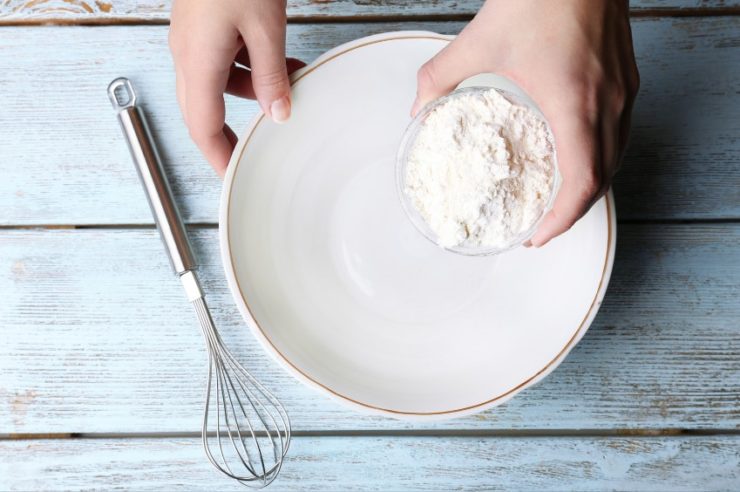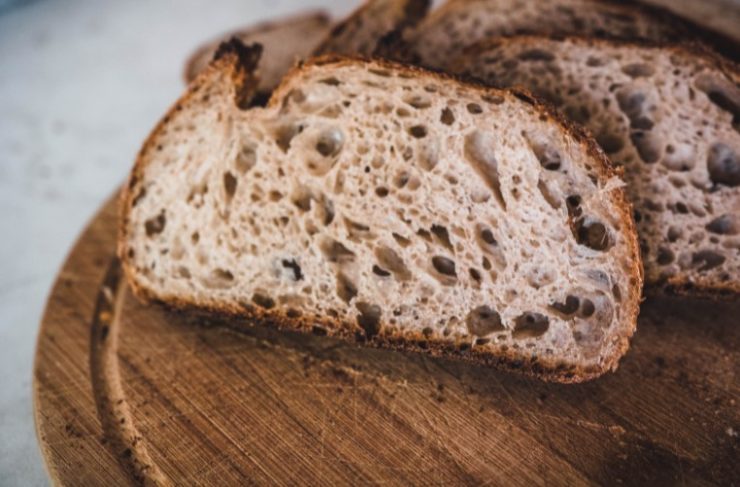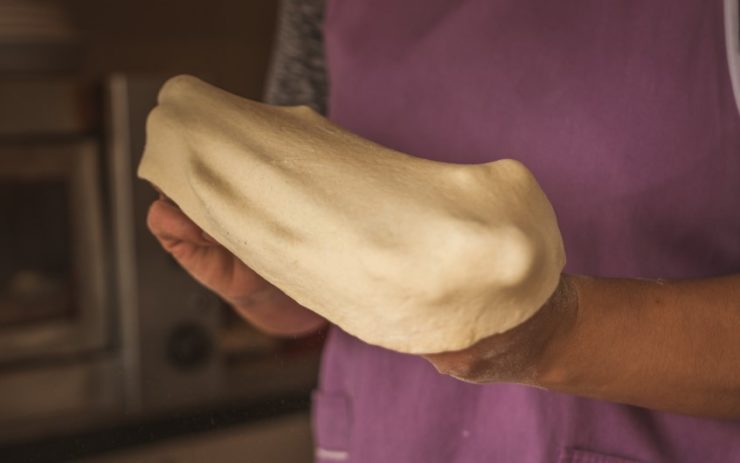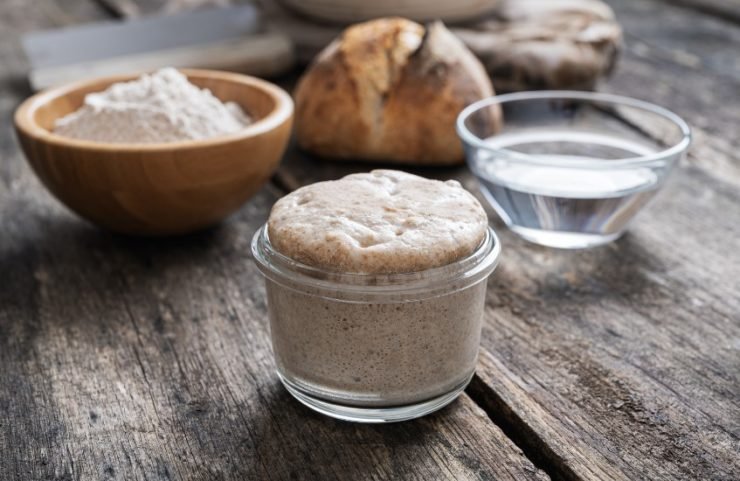The autolyse technique (pronounced AUTO-lees) is an extra step that bread bakers can take during the mixing of their dough. This technique makes doughs easier to handle and reduces mixing and kneading time.
Additionally, using an autolyse improves the color, flavor, and overall texture of sourdough bread.
It’s important not to add yeast or starter to your autolyse, which I’ll cover further below. Only flour and water are included in the autolyse stage.
The flour and water are mixed until a dough forms. Then the dough is left to rest for anywhere from 15 minutes to 2 hours. This process hydrates the flour and the gluten proteins, creating a more elastic dough.
While working professionally as a baker, I gleaned excellent insight on how to autolyse for a better sourdough loaf. In this article, I’ll share tips on when it’s beneficial to use and when it’s unnecessary.
In This Article
Everything You Need To Know About Autolyse
Why An Autolyse Only Contains Flour And Water

To properly use this technique, it’s crucial to use only flour and water. Any starters, salt, or other ingredients should not be added until after the autolyse period is complete.
An autolyse depends on the natural enzymes in the flour to soften the dough and increase elasticity. If yeast or salt are added, they can tighten up gluten strands, resulting in a tougher dough.
If you’re wondering if you should include a pre-ferment (like a levain, poolish, or biga) with your autolyse, the answer is usually no. Unless you have a very liquid pre-ferment like a poolish along with a low-hydration dough, don’t worry about including it.
Remember that if you do add a liquid pre-ferment to your autolyse, you will be initiating the fermentation process. Something you generally want to avoid until after this step is complete.
Thankfully, the liquid pre-ferments do have a fairly low yeast activity level. So you shouldn’t have an exploding autolyse, as long as you don’t overdo it.
When To Autolyse

If you’re hand-mixing a small amount of sourdough bread at home, an autolyse can reduce the amount of time and effort you need for mixing.
If you’ve tried a recipe before and found that the dough was too firm and difficult to mix and shape, try the autolyse technique. It can make a world of difference.
Some of the best flours to autolyse are strong, high-protein flours. These include whole wheat, semolina, Manitoba, and durum.
Making pizza dough with a high-protein flour and want a stretchier dough? Utilize the autolyse technique to take your pizza crust to the next level.
Finally, this technique can be used for ciabatta and baguettes. It tends to create a more open crumb and can improve the volume of your loaves and baguettes.
When Not To Autolyse
If you’re using a low-gluten flour with a protein content under 12%, I don’t recommend doing an autolyse. It’s unnecessary and can even make your dough too slack to handle.
It’s also not recommended to autolyse if you’re using fresh-milled whole-grain flour. This can make your dough too wet and sticky to handle comfortably.
Keep in mind, too, that if you’re making rye bread, you’ll want to skip this technique. Rye tends to ferment more quickly than regular wheat, and using autolyse with it can cause dough deterioration.
Last but not least, if you’re using a flour that’s known for its natural elasticity like spelt, the autolyse technique is unnecessary.
How Long to Autolyse
How long you should autolyse your dough depends on a variety of factors, and there’s no one-size-fits-all answer.
If you’re making sourdough loaves with flour that has a protein content of at least 12%, start with 60 minutes. You can even let the autolyse go as long as 4 hours, so experimentation is key.
If you’re trying this technique with pizza dough, keep the autolyse time shorter, around 15-20 minutes.
How to Test if Your Autolyse Worked

To check your autolyse, use the classic windowpane test. Stretch a small portion of the dough out between your fingers. If it stretches out nice and thin without tearing, and you can see through it a little, you’re good to go.
Tips For Mixing After Autolyse
Once your autolyse is complete, you’ll need to mix in your sourdough starter. This can prove tricky once your autolysed dough has become more elastic and smooth.
To make it a little easier, consider setting aside 1 ounce of water from your autolyse to mix with the starter you’ll be adding. Once you add your starter, mix on low speed until the dough comes together. You may need to stop and give the bowl a good scrape a few times to get everything fully incorporated.
Leaving An Autolyse Overnight – Good Or Bad Idea?
It is possible to go too far with an autolyse. If your dough is left for too long, it can turn into a very slack dough that’s difficult to correct (if not impossible).
If you’re determined to try an overnight autolyse, I’d recommend working your way up to it with a few recipe trials. And even then, only with very strong flours like whole wheat.
Remember that an autolyse is not always necessary, so if it takes too much time, consider forgoing it all together so you can get your loaves in the oven.
Final Considerations For Autolyse
As you can see, the autolyse technique has a lot to offer, and can make your job easier and lead to a better final product when you’re making sourdough bread.
It’s best to use this technique with high-protein flours like bread flour and durum flour. If you’re using flours with a protein content under 12%, save some time and skip the autolyse.
The good news is, sourdough breads are pretty flexible and fun to play with. Give yourself permission to experiment! Track your results as you go, and you might come up with some stellar new recipes using this technique.
FAQs
Can you autolyse sourdough for too long?
Yes, it is possible to autolyse for too long. This can result in a dough that is too slack and hard to handle.
Can I autolyse overnight in the fridge?
It’s not recommended. Autolysing overnight can make your dough too slack. The dough will also take time to warm up to a fermentation-friendly temperature in the morning.
Should I autolyse with salt?
A traditional autolyse does not include salt. However, there is a separate technique named “saltolyse” that does include it- but it requires different steps.







